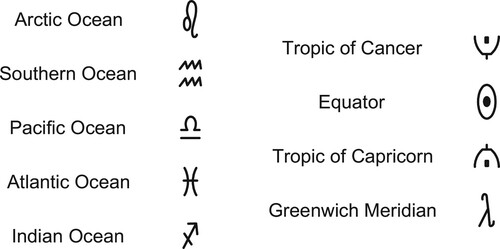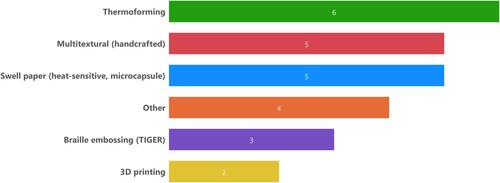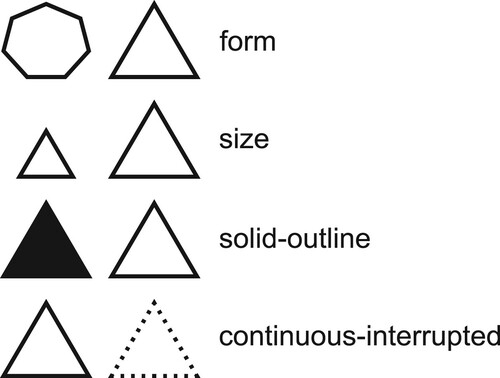Figures & data
Figure 3. Highly distinguishable tactile symbols to be used with vacuum-forming. Based on Nolan and Morris (Citation1971).

Figure 4. Tactile symbols that were found to be the most discriminable during the preliminary study (Wiedel and Groves, Citation1969).

Figure 5. Selected symbols from the first described attempt to standardize tactile symbols. Based on James, (Citation1975).

Figure 6. Highly distinguishable tactile symbols to be used with swell paper. Based on BANA and the CBA (Citation2010).

Figure 7. Proposition of standardized symbols for tactile world maps. Based on Regis and Nogueira (Citation2013).

Table 1. Miscellaneous.
Table 2. Dimensions.
Table 3. Distances.
Table 4. Heights.
Table


